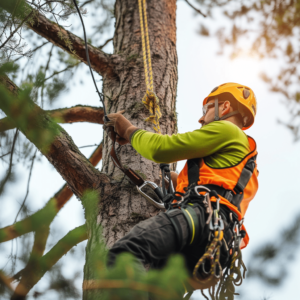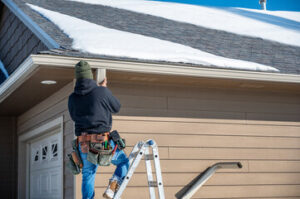Plumbers Bradenton install and repair pipes that supply water, carry sewage, and connect appliances. They often work with construction teams to ensure plumbing systems integrate seamlessly into building projects and meet standards and regulations.

Plumbers also interact with clients, so customer service skills are important. They must be able to explain technical issues in ways that are easy for customers to understand.
A plumber is responsible for installing, maintaining, and repairing the pipes that facilitate water, gas, and waste disposal in residential, commercial, and industrial settings. This career requires knowledge of a wide range of systems and tools, as well as an understanding of local plumbing codes and regulations.
Plumbers are also expected to have excellent customer service skills, as they often work directly with customers to determine their needs and provide estimates for services. They must be able to explain complex issues in easy-to-understand terms and be willing to take the time needed to answer questions. In addition, they may be called upon to advise customers on best practices for preserving or conserving water, as well as how to maintain their plumbing systems between visits from plumbers.
Construction plumbers are involved in the installation of new plumbing systems in commercial or industrial buildings, working closely with contractors to ensure that the piping is properly designed and connected before building begins. This job requires precise measurements and adherence to strict building codes. Additionally, these plumbers are required to install appliances and fixtures, such as toilets, showers, sinks, dishwashers, and water heaters.
In addition to installing new plumbing systems, some plumbers are also involved in the inspection and repair of existing ones. This can include locating leaks, testing pressure levels, and inspecting appliances for safety and efficiency. Additionally, these plumbers are responsible for repairing damaged pipework and replacing parts like valves and taps.
Some plumbers are also responsible for the maintenance of backflow testing equipment, which is used to prevent contaminated water from entering clean drinking water supplies. This is an important aspect of the plumbing industry, as contaminated water can cause serious health problems. In fact, according to the CDC, backflow-related incidents account for more than seven million illnesses each year.
Some plumbers are independent contractors, which gives them more control over their schedule and choice of projects. However, this also means that they are responsible for obtaining their own materials and paying taxes. Additionally, plumbing emergencies can occur at any time, so plumbers need to be available to respond promptly.
Inspection
Backflow testing equipment is used by certified plumbers to measure the pressure at different points within your plumbing system. This helps to identify any imbalances in water pressure that might cause flow reversal, which could allow contaminants into your clean drinking water supply. It also checks that your backflow prevention device works properly. During an inspection, the plumber turns off the downstream shut-off valve and hooks up test kit hoses to small nozzles built into the preventer called test cocks. They then run a few water taps at once to see if the backflow prevention valves allow one-way flow and block reverse flow, and that air ports open when they should. They also check that the relief valve opens when needed. They then analyze the data and report their findings.
Repair
Plumbers repair and maintain pipes, fixtures, and appliances that distribute water, gas, and waste in homes and businesses. Their duties include interpreting blueprints and building codes to ensure the installation of plumbing components meets standards. They also use tools to unclog drains, repair leaky faucets, and replace water heaters. Plumbers may also install and repair backflow testing equipment.
Plumbers who specialize in residential plumbing work usually complete an apprenticeship program that lasts two to five years. They often work directly with customers to discuss their needs, inspect their properties, and provide estimates for services. They must be able to listen attentively to their clients’ concerns and explain complex issues in easy-to-understand terms. This is especially important when working on sewage systems, as plumbers can be exposed to dangerous microbes in the fecal matter of people who use public toilets.
Commercial and industrial plumbers work on larger-scale plumbing systems that serve a wide range of occupants, such as office buildings, retail stores, hospitals, factories, and power plants. These systems are more complex than the plumbing in residences, and plumbers who work on them must be able to collaborate with architects, construction teams, and facility managers to ensure the proper integration of the plumbing with the rest of the infrastructure.
While it’s not required, many plumbers have additional training or certifications to work on specific types of plumbing fixtures or appliances. For example, some plumbers are certified to work on natural gas plumbing systems. Others are licensed to inspect backflow prevention devices. Still others are trained to use video cameras to examine the interior of drainpipes and sewer lines. These skills can be particularly helpful when assessing or troubleshooting plumbing problems in difficult-to-reach places, such as the roof or basement of a home.
Plumbing is a physically demanding job that requires strength, stamina, and the ability to work in tight spaces for extended periods of time. In addition, it is important for plumbers to have good manual dexterity and the ability to visualize detailed structures from drawings. Finally, plumbers must be able to work well under pressure and adhere to strict safety protocols when working with chemicals, repairing or installing pipes, or in confined spaces like attics or crawlspaces.
Maintenance
Backflow testing equipment is required by local and state statutes to ensure that your home’s water supply remains free from contaminants that could threaten your family’s health. A licensed plumber can handle all the details of this testing to make sure that you stay up to code. They’ll also be able to spot imbalances in your water pressure, which are often a sign of bigger plumbing problems that can be easily corrected. This can save you a lot of money through preventive maintenance and early repair.








